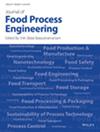Advancements and 4E + Q performance analyses in solar drying for maize kernels preservation: A comprehensive review
Abstract
The world's population is projected to increase, impacting a 60% rise in food production demand by 2050, including the demand for maize. Currently, maize production is estimated to reach 1510 million tons in 2023, necessitating suitable methods for preserving maize kernels to maintain quality and reduce post-harvest agricultural losses. Although drying methods present a viable solution to address this issue, the majority of farmers in Indonesia still use conventional drying methods, such as open sun drying, which has several drawbacks. Hence, solar drying systems aim to overcome these limitations by harnessing renewable, clean, sustainable, and eco-friendly energy to support the sustainable development goals (SDGs). This research comprehensively reviews the progress of solar drying technology, providing insights into its working principles, innovative designs, and operational modes across various types of solar dryers. The 4E + Q analysis provides information regarding the performance of solar drying systems, including energy analysis to determine the quantity of energy utilized and exergy analysis to demonstrate irreversibility in thermodynamic processes. Additionally, this analysis highlights environmental impacts such as CO2 emissions and mitigation efforts, while considering economic aspects through lifecycle assessment and payback period methods. The quality assessment of dried maize kernels according to the standards set by the Indonesian National Standard (SNI) is conducted, including proximate analysis, aflatoxin levels, color measurements, and internal cracking analysis.
Practical applications
Drying technology is essential for the food preservation process, enabling the maintenance of product quality and extending storage life by reducing the moisture content to eliminate the activities of microbial agents. The application of solar drying technology harnesses solar radiation as the primary energy source, making it well-suited for crops like paddy, maize, cassava, etc. The development of solar dryers continues through modifications and the addition of auxiliary systems to achieve more efficient, economical, and sustainable technologies. The hope is that in the future, these technologies can be adopted by farmers on an industrial scale due to low operational costs, ease of operation, and controllable operating conditions. The methodological approach is necessary to evaluate the performance of solar dryers and the quality of dried products through a 4E + Q analysis, it provides information on energy consumption, exergy flow, economic considerations, environmental aspects, and quality assessments against national quality standards (SNI).


 求助内容:
求助内容: 应助结果提醒方式:
应助结果提醒方式:


